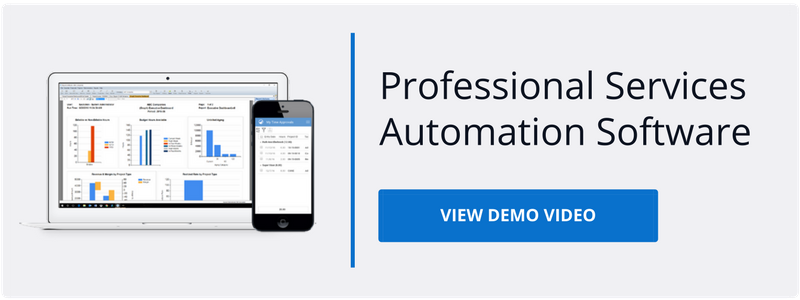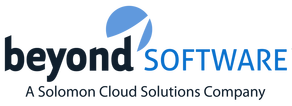Most project-based companies track some form of performance measure to determine whether their operations are on track to meet their goals. Many such companies measure "broad picture" metrics, such as projects completed or project element completions as checks on productivity. Not so many companies track more granular metrics that provide the tinier bites of data related to day-to-day operations.
However, project-based companies that do track the smallest aspects of productivity are much more likely to understand not just where their productivity is lagging, but also why that is the case. In most of these companies, the smallest bits of data related to the biggest drains of resources - labor and expense values - provide the best directives to improve overall project productivity metrics and consequently, overall corporate profitability as well.
Profits Rise Through Improved Productivity
Profit flows when prices in the market fully recover production costs; low production costs and high market prices often result in optimal profitability. Consequently, many producers look to two processes to improve their profits:
- reducing their costs through careful materials and supplier selections and enhanced production capacities and facilities, and
- improving the quality of their services so they can increase those prices.
Yet, despite their awareness of the need to do both, many project-focused leaders still fail to accurately measure their labor and expense costs when figuring their overall project costs of production, and that failure ultimately negatively impacts their company's profitability.
Valuing Labor in the Profitability Evaluation
Employee and contractor productivity is often a crucial factor in corporate success, and on the organization's best days, every worker is performing at peak capacity throughout their full day's effort. However, most corporations rarely achieve 100 percent productivity, and measuring those constantly-fluid fluctuations in productivity can be tricky:
- Most of the time, some workers will be 100 percent on top of things while others will be off their best game, and still others may be out of the production process altogether. Measuring the productivity metrics of the aggregate workforce, then, means capturing the individual worker's outputs on both a daily basis and over time, then measuring those against costs of production. Months where worker productivity soars are also often the months where the company can recognize significant profit gains.
- The value of wages also impacts the labor metric. Higher paid workers should, ostensibly, perform at higher levels of productivity, while workers paid less to do less critical work must still produce to the best of their capacity to ensure that the entire production facility operates at optimal function levels.
- Further, leadership must also factor in insurance and benefits values and other cost factors related to maintaining a robust labor force if they want to truly understand how the value of their workforce impacts the profitability of the enterprise.
In a professional services setting, tracking labor costs is even more critical to the success of the project itself. While a single professional may find it fairly simple to record (and bill out) their own activities, professional services companies that don't track those aspects of their work that are delegated to employees or contractors can lose considerable revenue opportunities.
Because they don't know what those subordinates are doing, they subsequently lose those values and end up covering the costs for services that should be billed out to the appropriate client. For these organizations, tracking worker effort is often the critical difference between the success and failure of the company.
Tracking Expenses in the Profitability Evaluation
The other, often silent corporate killer of profitability is the slow drain of resources through unexpected or unknown expenses. Tracking expenses offers several benefits to every company, despite the fact that many consider it to be a tedious task:
- Most projects work off a set budget, so they begin each effort with an expectation of the costs and expenses the project will encounter. Where many fail, however, is in not budgeting for unexpected costs or expenses.
- Another critical financial metric for every company, including professional services companies, is cash flow. Cash flow is the lubricant that keeps businesses moving. Having sufficient cash flow available assures that the resources are available to pay their workers and suppliers, and keep the lights on and the electricity flowing. Unexpected or unrecorded expenses can drain cash accounts, leaving the enterprise without the resources necessary to maintain these crucial production capacities. Failing to adequately track cash flow plays a part in the demise of one of every four small businesses.
Traditional Timesheets and Expense Forms Don't Capture Today's Performance and Profitability Metrics
Adding to the challenge of building profitability is the fact that many of today's companies still rely on traditional timesheets and expense forms to track their data. While those business tools still provide some value, they are simply not designed to comprehensively capture the multitude of metrics emerging from today's corporate realities.
- Basic timesheets are only as informative as workers make them, and errors and omissions can rack up employee costs with no correlation to productivity.
- Traditional expense recording tools are perhaps even more unreliable than timesheets. Workers, especially remote workers, may not record all their data, which could result in the failure to properly bill the customer. In a professional services situation, unrecorded project expenses are often the cause of significant losses of revenue opportunities.
Beyond Software Professional Services Automation Software Unites Time and Expense Tracking
Understanding the increasingly difficult challenge of reducing costs while improving productivity is what drove Beyond Software to develop its automated time and expense tracking app. This mobile app speeds and eases the entry of time, tasks, and expenses into a single program that collects the data into project and task. The software also integrates imaging, so pictures of receipts become permanent aspects of the project record and are always available if needed.
The resulting project- and corporate-based database provides company leadership with the information it needs to track productivity in all aspect of the enterprise. The visibility into the granular, day-to-day aspects of production values and accrued expenses lets managers make informed decisions to review allocations or make other alterations that will reduce losses or improve performances.
At Beyond, we are dedicated to helping your professional services business thrive, and we designed our cutting-edge time and expense-tracking software specifically to assist you to accomplish your goals, including improving your profitability.
For additional information on Beyond Software please contact:
Nicole Holliday
nholliday@beyondsoftware.com
866-510-7839



